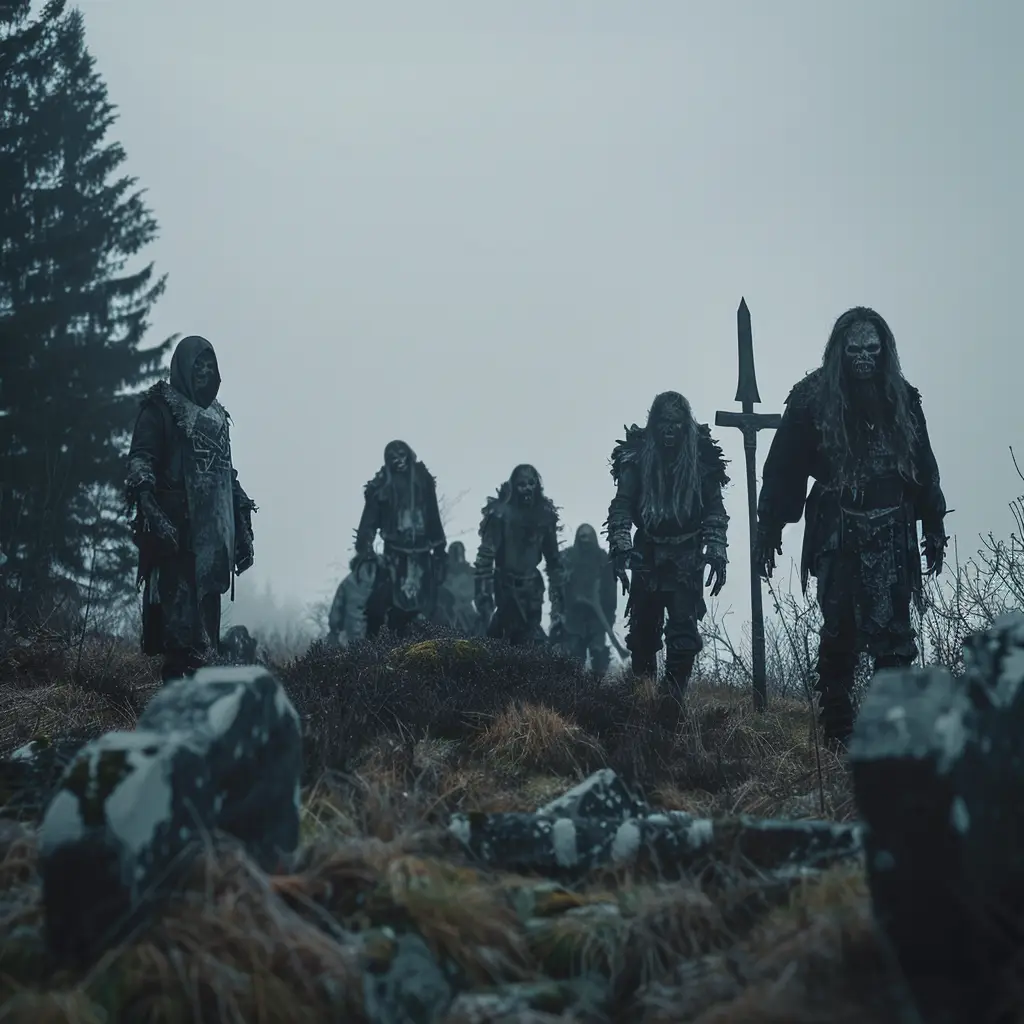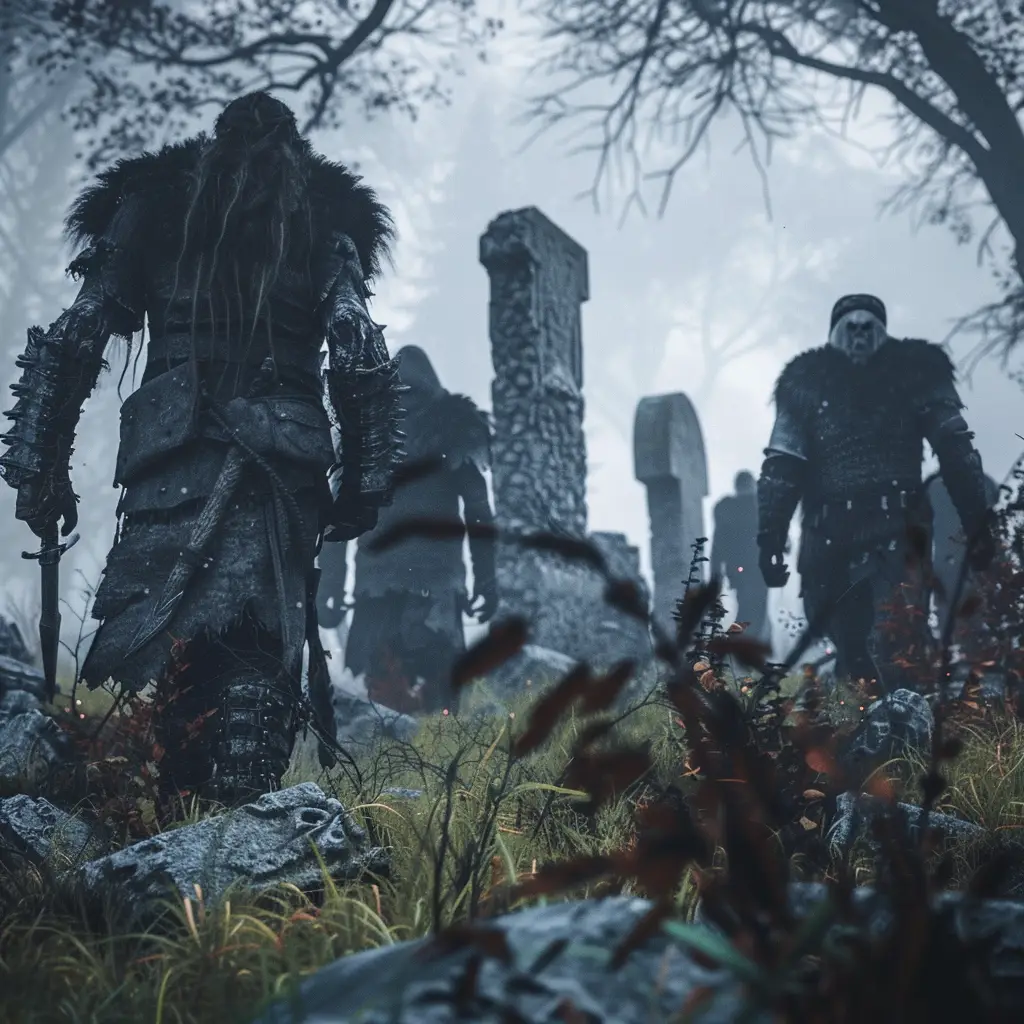“Warding off Draugr burial” refers to the practice of taking precautions during the burial process to prevent the deceased from returning as Draugr, malevolent undead creatures in Norse mythology and Scandinavian folklore. In ancient Norse culture, it was believed that individuals who died under unnatural or dishonourable circumstances, or those who were not properly laid to rest, had the potential to rise again as Draugr.To ward off Draugr burial, several rituals and precautions were often observed:
Proper burial rites: Performing the appropriate burial rites according to Norse customs was essential to ensure that the deceased remained at peace and did not return as Draugr. This might include rituals to honour the deceased’s memory and ensure a respectful farewell.
Securing the grave: Measures were taken to secure the grave site to prevent the deceased from escaping. This could involve placing heavy stones or mounds of earth over the burial site to physically restrain the corpse.
Grave goods: Offering grave goods or personal belongings with the deceased was a common practice in Norse culture. These offerings were believed to provide comfort to the deceased in the afterlife and discourage them from returning as Draugr.
Funeral feasts: Hosting a funeral feast or gathering after the burial was another way to honour the deceased and ensure their peaceful transition to the afterlife. It was also an opportunity for the community to come together and show solidarity in warding off malevolent spirits.
Magical wards: In some cases, magical wards or symbols might be inscribed on the burial site or placed within the grave to repel evil spirits and prevent the deceased from returning as Draugr.
By observing these precautions and rituals, individuals sought to ensure that the deceased remained at rest and did not pose a threat to the living as Draugr. These practices were deeply ingrained in Norse culture and played a significant role in shaping funeral customs and beliefs surrounding death and the afterlife.





